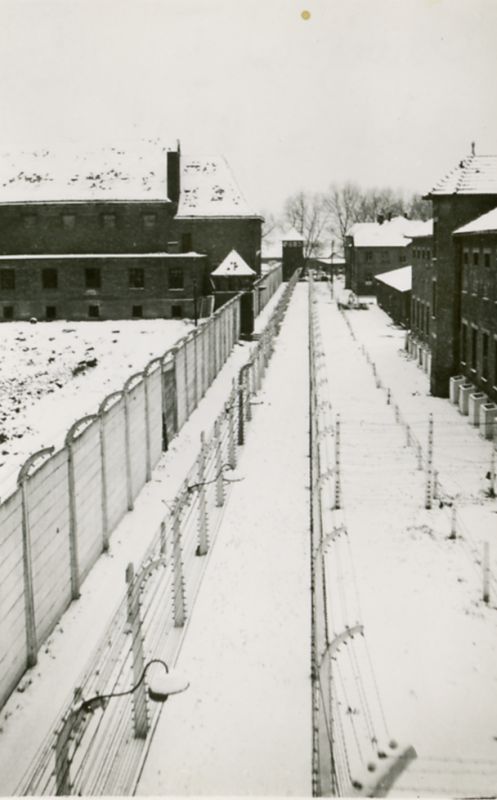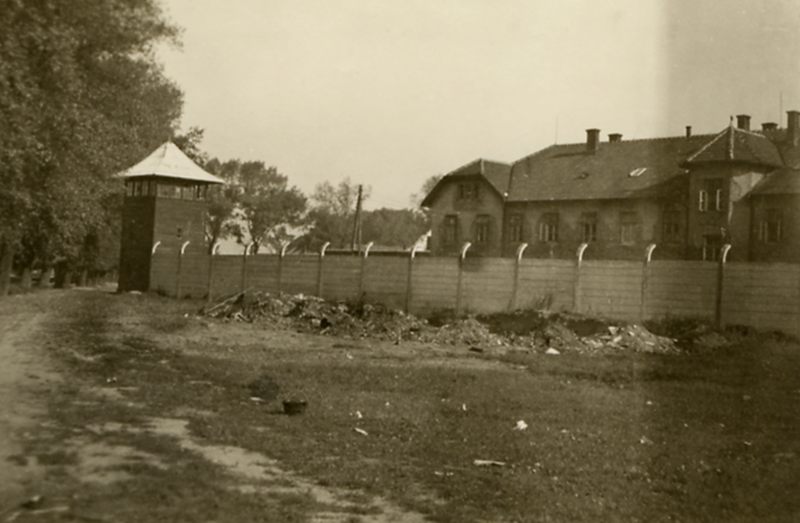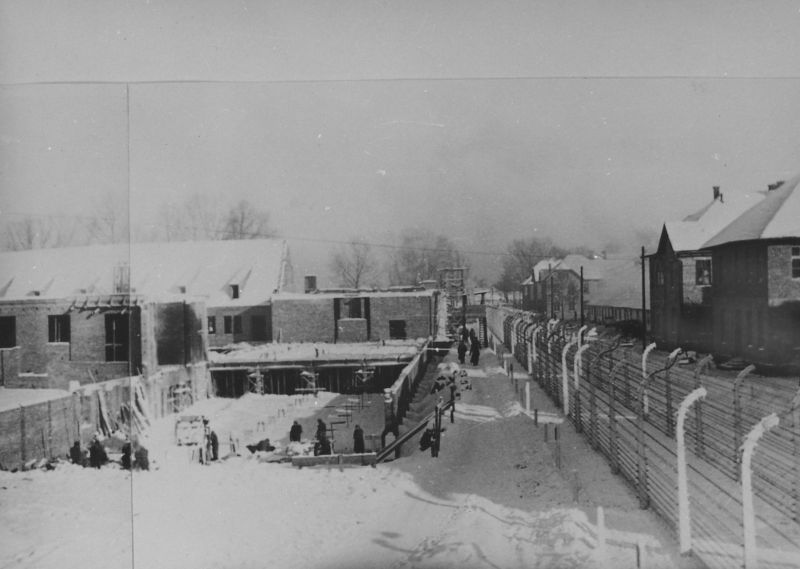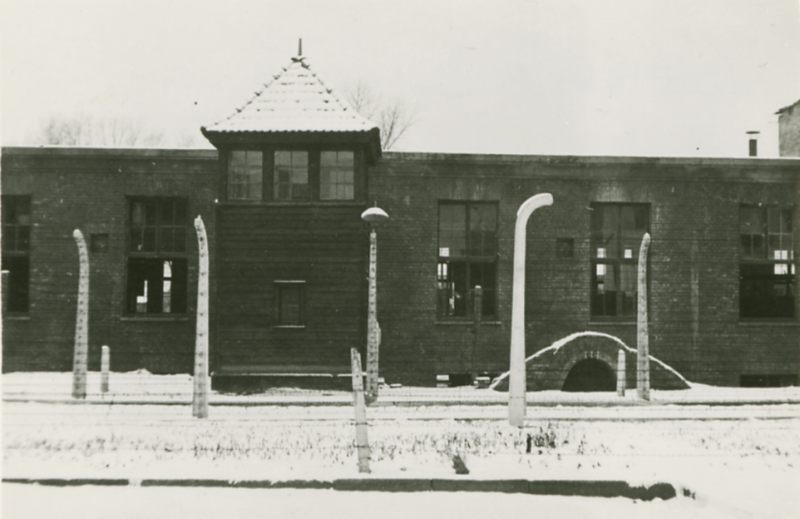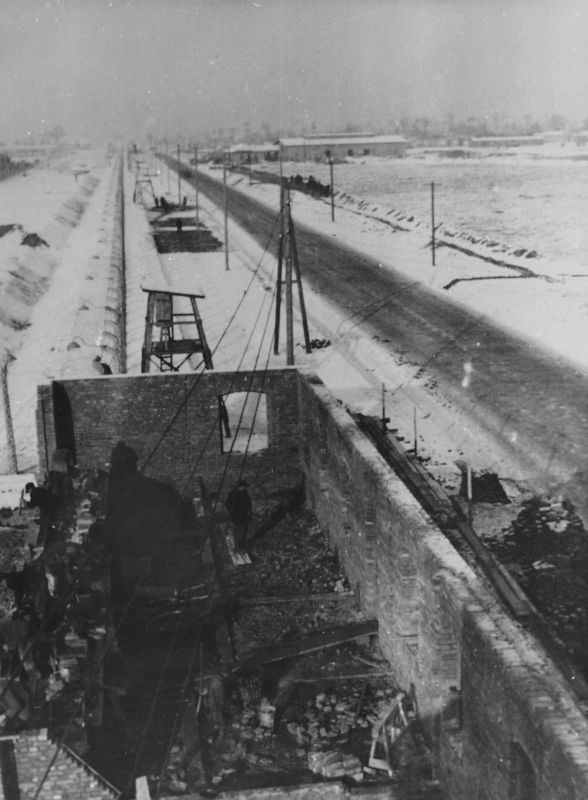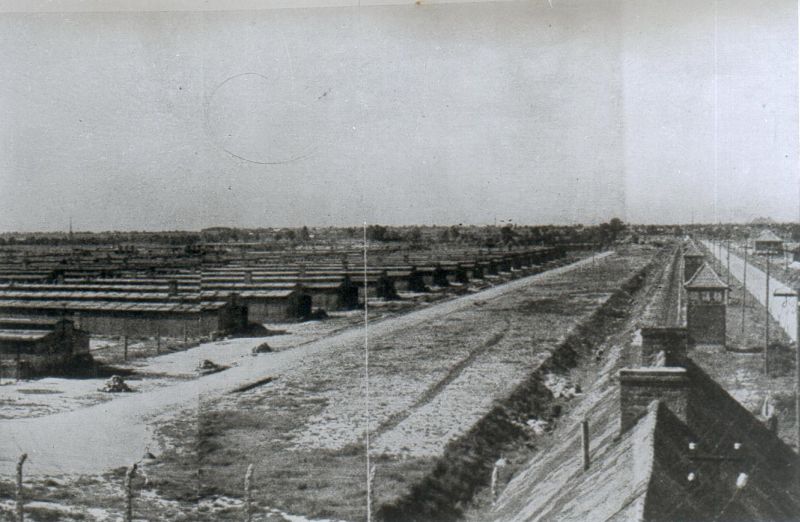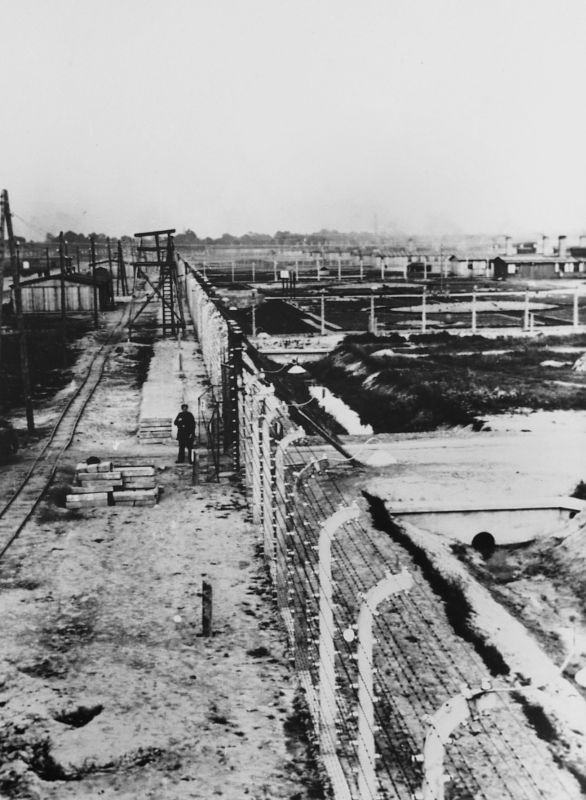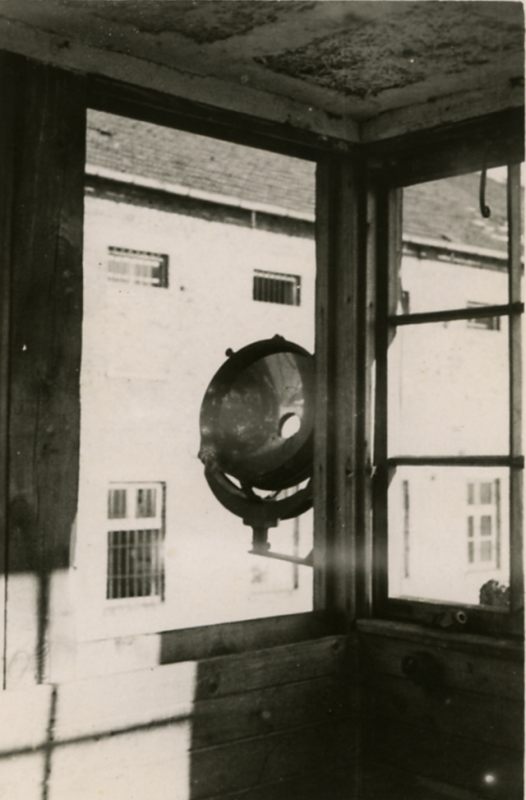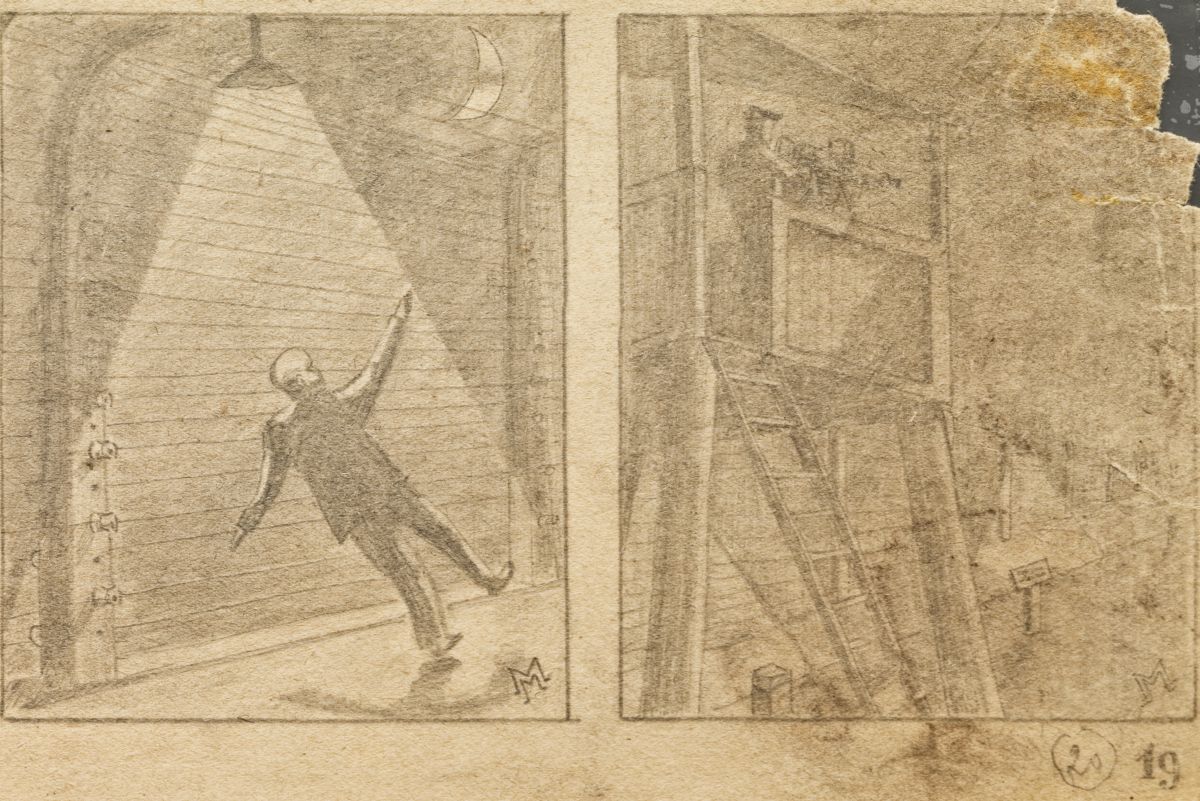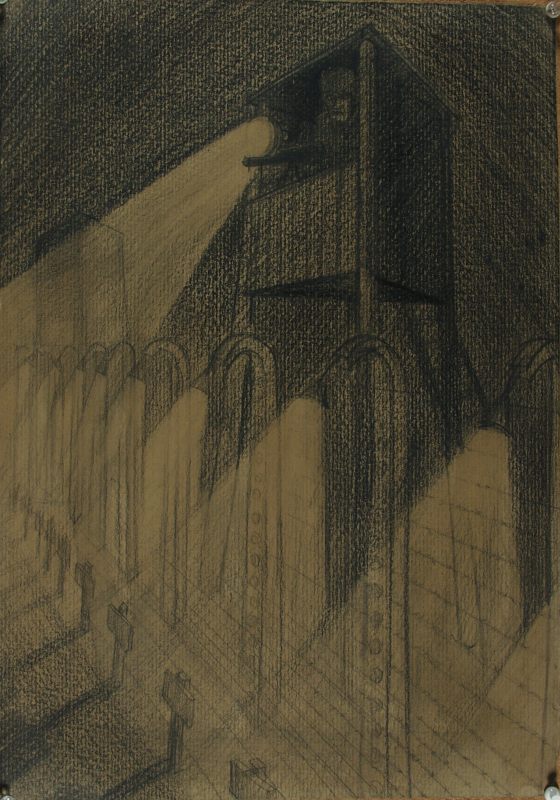The main camp was surrounded by a double barbed wire fence installed on 3.3 m high concrete posts. The posts were, in their upper part, curved towards the camp interior in the semi-circular shape. Three-phase 400 Volt current flew in the wires. Under the fence, approx. 1 meter deep, concrete slabs were put in order to prevent the prisoners from digging tunnels. From the inside of the camp, along the fence, there was a so-called neutral zone, gravelled and 3 meters wide. Entering the zone could result in being shot by the guards on duty in the towers located on the external side of the fence.
In the first stage of the camp’s functioning guard towers, so-called platforms, were approx. 4 meters high, were supported on four wooden pillars and had flat roofs.. As late as at the end of the year 1943 higher towers were constructed (7 and 11 meters high) on permanent foundations, with sloping roof and glazed windows. In 1942, about 3 meters high wall, made of concrete boards, was constructed on the western and southern side of the camp fencing. It seemed to be an attempt to hide the camp area from the view of civilians using the road nearby, and to create additional barrier making it more difficult for the prisoners to escape. �

